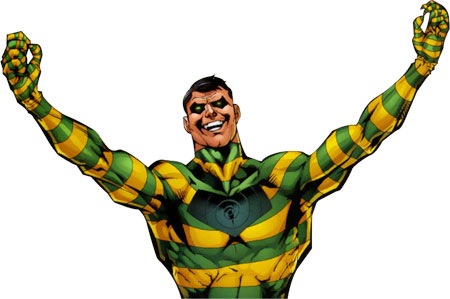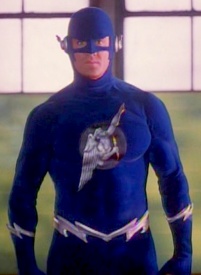For some reason, there are a lot of new character–focused blogs launching today. Among them is a site dedicated to another classic Flash Rogue: Nobody Tops The Top!
Daily Archives: April 1, 2011
Geoff Johns: Flashpoint-by-Point
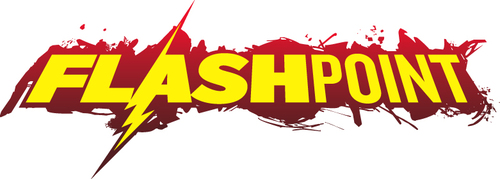
Newsarama has an extensive interview with Geoff Johns. Here are the items they thought were worth highlighting:
- In the Flashpoint mini-series, Flash and Batman team up “Brave and the Bold style.”
- Johns says his mini-series is the “most accessible event I’ve ever done,” saying there is no other comic necessary to read before or during his story.
- The writer has been working on the concept for years.
- One of the reasons there are multiple tie-ins is that comic creators were told about the event at a meeting, and they came up with what Johns calls “quality stories” they wanted to tell in the Flashpoint world.
- Although Johns won’t clarify whether the mini-series has lasting ramifications, he keeps saying things like, “where DC is going” … and “what we have coming out of” Flashpoint.
A few additional items that will probably be of interest:
- Andy Kubert is currently drawing issue #4 of the 5-issue miniseries, and Geoff Johns is currently writing #5.
- “The tie-ins aren’t just, like, ‘look, so-and-so is this way.’ It’s exploring ‘how did they get there, and why?'”
- “The first rule about Flashpoint is, don’t talk about what happens after Flashpoint.”
- “There’s another character that’s very obscure who is going to have a bigger role in the Flashpoint mini-series than she’s ever had in the DC Universe.”
- “In a way, Hot Pursuit will appear in Kid Flash: Lost, by Sterling Gates.”
“In a way?” That’s odd phrasing. Sort of like how Darth Vader killed Anakin Skywalker “from a certain point of view.” Hmm….
Meanwhile, let’s start speculation on the “very obscure” female character who will have a bigger role in this series. I’m guessing it’s not Element Girl/Element Woman since she’s already been mentioned (assuming they’re even the same character).
There’s a whole lot more in the full interview.
In other Flashpoint news, The Source has been posting more character designs with commentary by artist Andy Kubert.
Additionally, ComicsAlliance has a scoop with a new set of Flashpoint variant covers.
“Seeing” Blue: TV’s Cobalt Blue Prototype
When it comes to the 1990 Flash TV series, true Cobalt Blue fans usually list the “Twin Streaks” episode at the top of their playlist.
Predating Blue’s first appearance by eight years, “Twin Streaks” introduced Pollux, a clone of the Flash created from a sample of his blood.
Grown in a lab, Pollux was a prototype for what his creators hoped would be a line of super-soldiers. He also held some of the traits that would become associated with the Cobalt Blue character. While Rogues like Captain Cold, Trickster and Mirror Master appeared in modified versions of their comic book counterparts, Pollux mixed “reverse Flash” with evil-clone/twin and was driven by jealous rage.
While it would be a stretch to suggest that Pollux inspired writers Mark Waid and Brian Augustyn when creating Cobalt Blue, the raging jealousy and evil-twinness are something that both characters hold in common. Upon reaching a certain level of self-awareness, Pollux set out to annex aspects of Barry’s life, real and percieved, leading up to a super-speed showdown at the lab where he was weaned.
Pollux hit close to home for a lot of CB fans, and even inspired this loving tribute.
For more information on Pollux (TV’s Cobalt Blue!), check out this bio, and a review of the episode (from Crimson Lightning).
The Flash vs…Barry Allen? The Bronze-Age Origin of Cobalt Blue
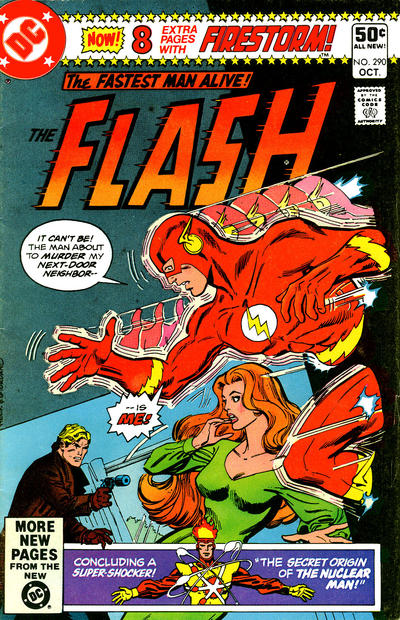
Most Flash readers, if they know about Cobalt Blue at all, know him as a new character introduced in the second half of the Mark Waid/Brian Augustyn run on The Flash in 1999. They might know that his link to Barry Allen was hinted at in The Life Story of the Flash and the first Flash Secret Files (both 1997), or that two Cobalt Blues appeared in the 1997 Speed Force special.
But Cobalt Blue’s origins can be traced all the way back to 1980!
Let’s return to the Bronze Age of comics. Continue reading
Cobalt Blue, Classic Rogue?
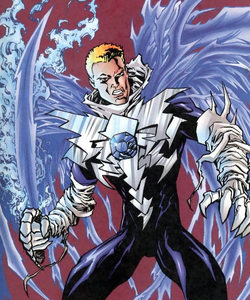 “Chain Lightning” (Flash #143–150, including the lead-in) is a polarizing Flash storyline. Some fans love the look into the future of the Flash legacy. Others can’t stand that it hinges on Barry having an evil twin. (I’ve never been entirely sure how much of the objection is to the evil twin trope in general, or to the fact that Cobalt Blue is Barry’s evil twin.) Even Mark Waid admits that it didn’t work, though he maintains in The Flash Companion that the idea was sound, he just screwed up on the execution.
“Chain Lightning” (Flash #143–150, including the lead-in) is a polarizing Flash storyline. Some fans love the look into the future of the Flash legacy. Others can’t stand that it hinges on Barry having an evil twin. (I’ve never been entirely sure how much of the objection is to the evil twin trope in general, or to the fact that Cobalt Blue is Barry’s evil twin.) Even Mark Waid admits that it didn’t work, though he maintains in The Flash Companion that the idea was sound, he just screwed up on the execution.
But then I had a thought: What if Cobalt Blue had appeared during the Silver Age instead of the late 1990s?
The evil twin trope hadn’t been discredited yet, so there would have been few objections on that basis. And with Barry as the new, current Flash rather than a fond memory, there would be no sense that DC was tarnishing a cherished hero’s legacy.
Consider: The Flash’s opposite number, who could have had his life but for a twist of fate, who fights against the law instead of for it, who uses magic instead of science. There’s some solid appeal there. And being a conceptual opposite makes him fill a different role than the Reverse-Flash, who is basically the Flash, but evil. (Sort of like Savitar vs. Zoom)
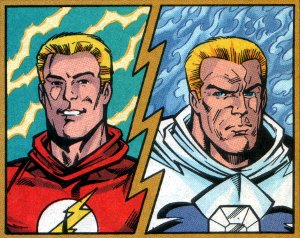
Obviously the big 6-issue epics didn’t exist back then, but I can imagine Chain Lightning as a recurring type of story, where once a year or so, the Flash has to go into the future to help another future Flash fight that generation’s Cobalt Blue.
So…
Is Cobalt Blue that much worse a name than Captain Cold, Professor Zoom, Pied Piper or Abra Kadabra? (Admittedly, Waid says in the same interview that he wanted to use the name Wildfire, but DC nixed it.)
Is a literal evil twin that much harder to swallow than a clone (Inertia), a mimic who has been known to alter his appearance to match the original (Professor Zoom), the product of an imperfect duplicator ray (Bizarro), or an alternate universe version (Ultraman)?
Is the concept that much more hokey than a gang boss who dresses as a clown (Joker), a talking telepathic gorilla (Grodd), a villain who spins (The Top), runs around in a parka and snow goggles in the heat of summer (Captain Cold), or throws trick boomerangs (Captain Boomerang, of course)? Look at the reactions to Final Crisis: Rogues’ Revenge from people who don’t read The Flash. They were surprised to find that the Rogues were compelling characters. Readers outside the Flash fanbase look at the Rogues’ names, costumes, and powers and figure that they’re nothing but lame jokes, but when used properly, they transcend the cheese factor.
What do you think? Am I totally off-base here, or could Cobalt Blue have worked as a classic Silver-Age villain?
(Originally posted October 2008. Expanded from a remark I posted on Twitter earlier, itself condensed from a post on Comic Bloc in response to Heatwave the Rogue’s assertion that Cobalt Blue is the Mopee of the modern era.)

